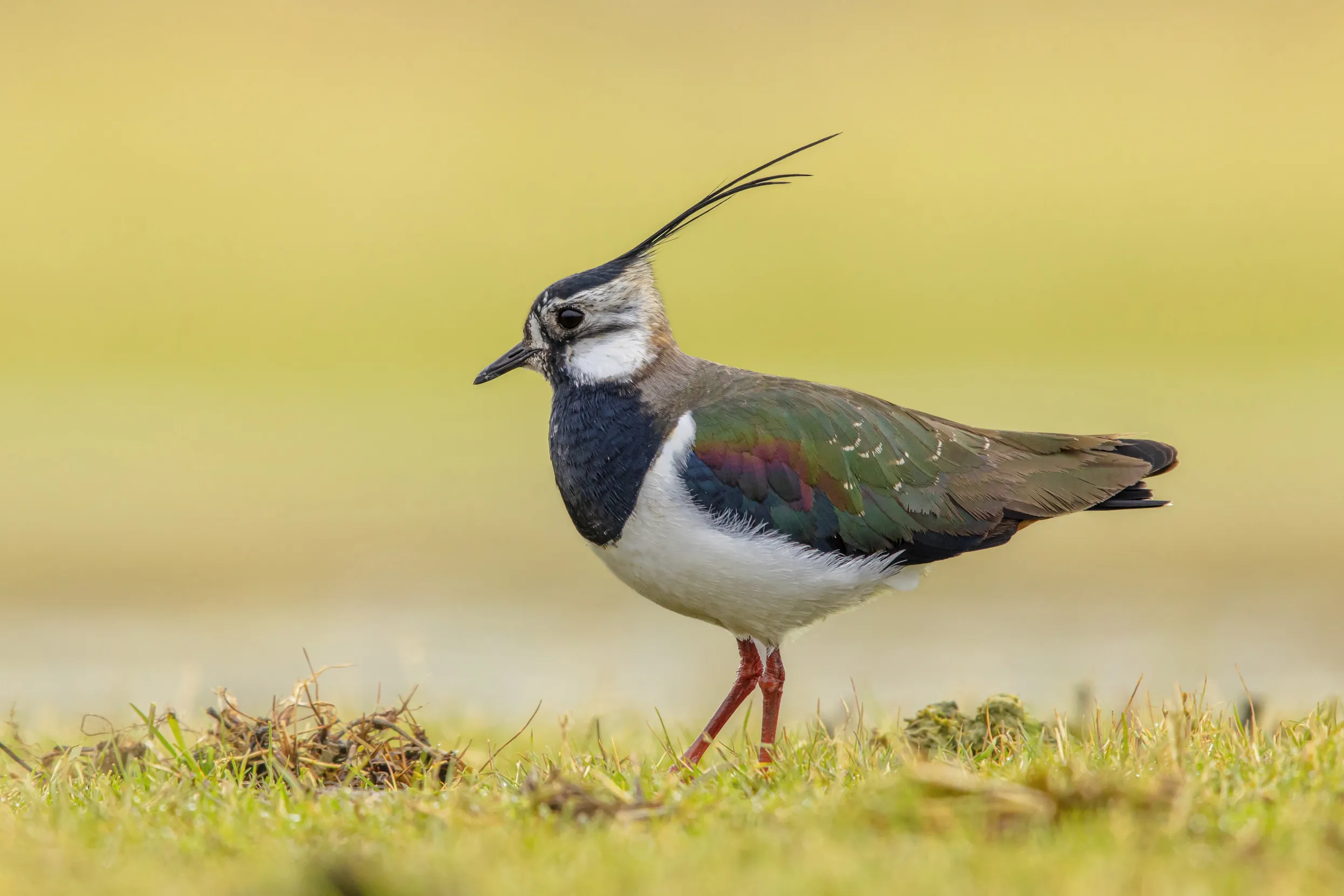
Lapwing conservation - Advice for farmers
Lapwings can be found on all types of farmland, but they are more scarce in purely arable or intensive grassland systems.

On this page
Lapwings in brief
The UK population of the lapwing has declined by 55% since 1967.
This decline has largely been caused by the loss of mixed farming, spring cropping and the intensification of grassland management. Declines in the west of the UK are leading to local extinctions.
Key points
- Maintain suitable nesting habitat in fields traditionally used for nesting.
- Where spring cropping is no longer a viable option, create fallow plots using agri-environment scheme funding.
- Look out for nests during agricultural operations between mid-March and June.
- Avoid planting new trees or hedges in areas used by breeding Lapwings.
What this species needs
Bare ground or short vegetation for nests from mid-March to June
Lapwings breed between mid-March and June. They nest on spring-tilled arable land or on short grassland with a low stocking rate. Birds with arable nests often walk their chicks onto grazed pasture to feed.
Lots of soil and ground invertebrates throughout the year
Lapwings feed mainly on earthworms, leatherjackets, insects and their larvae. They generally feed where they can find lots of these, such as in grazed pasture. Wet grassland is a particularly important source of food.

How to help
On arable land
- Look out for lapwing nests during cultivation, hoeing or rolling operations from mid-March. If a series of such operations are necessary, try to complete them all within one week so that failed birds can re-nest safely.
- In mixed farming areas, plan the rotation to ensure some spring-sown plots are located next to grazed pasture every year.
- A fallow plot (1-2 hectares in size) in the middle of large fields may offer nesting habitat on arable land where late-sown spring crops are no longer practiced. Bare plots in smaller fields may also be selected by lapwing. They are particularly beneficial if sited in locations where lapwings have nested in the past. Otherwise, site them away from woods or tall hedges and ideally next to grazed pasture or damp areas.
- Aim to create the appearance of a very rough seedbed or tillage on the fallow plot before mid-March (birds rarely nest on a bare surface that is too smooth). Leave them undisturbed until mid-July, or before then if the chicks have fledged.
On grassland
- Do you have any unimproved or semi-improved tillage pastures where a short (ideally around 5cm or less) but tussocky sward can be maintained with a low to moderate stocking rate throughout the spring? A high proportion of lapwing nests will be trampled if stock levels exceed one livestock unit per hectare between mid-March and the end of June. Heavy grazing from late summer onwards will provide a short sward for nesting lapwings the following spring.
- Create or keep damp meadows or pastures. Lapwings find more food on areas which have damp soils throughout the summer. You can wet areas by raising ditch water levels or blocking field drains. Even small wet areas in field corners can create feeding areas for chicks.
- Growing spring-sown arable fodder crops will benefit lapwings in areas which are largely improved grassland or upland pasture. The spring tillage provides nesting habitat for lapwing and adjacent grazed or damp pasture provides good feeding habitat. Try to avoid destroying lapwing nests during operations after mid-March.